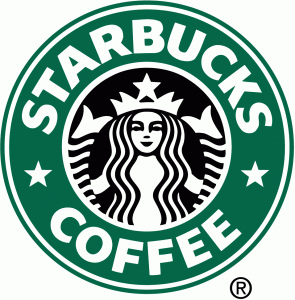why fast feeders need starbucks to succeed
The editor of QSR Magazine, the trade journal for quick service restaurant brands (fast feeders like McDonalds, Dunkin Donuts, Baskin Robbins, etc.), interviewed me to explain to QSRs “Why You Win If Starbucks Survives.” The interview is based on an article which I’m posting in full here.
The interview is based on an article which I’m posting in full here.
Why We Need Starbucks to Succeed
Starbucks continues to struggle and many in the quick-serve restaurant (QSR) business may be quietly celebrating the problems of the former industry darling.
After persevering through the years when it seemed Starbucks could do no wrong, the chain’s current stumbles are a welcome antidote to the constant comparisons to Starbucks’ success that investors, the press, and even customers have loved to make. After all, running a QSR chain is an incredibly difficult business and it’s nice to see the rest of the world recognizing what we’ve known all along – Starbucks’ formula is not fool-proof.
But the fact is we need Starbucks to succeed. And not just because market valuations tend to punish an entire category when a major player hits a rough spot. Or because we need a common enemy to fight against. Starbucks benefits the QSR category in ways that cut to the core of our business.
First, Starbucks provides a real-life R&D lab for innovation. From its new products (chai tea lattes for example), to its original service standards (employees calling out people’s orders in a friendly banter), and game-changing brand experiences (offering chain-wide Wi-Fi), Starbucks has led the category with its innovations. And there’s a lot to be learned from their stunning successes and equally staggering failures.
I don’t mean to suggest that QSRs should sit back and let Starbucks do all the innovating (although a case for adopting a “fast follower” strategy could be made). Rather, companies need to aggressively pursue innovation now more than ever. But we should factor into our development efforts and decision-making the results that Starbucks has experienced with similar new concepts.
Particularly for high-risk or high-cost innovations, it’s safe to assume that most QSRs have conceived similar ideas. Without the scrutiny of franchisees, Starbucks has the freedom to make some of the moves we wish we could. They can take the leap from R&D to store more easily, working out the kinks to make a successful launch or taking the beating when one is not possible. Through careful study and analysis of what works and what doesn’t for the coffee chain and why, we benefit from letting Starbucks serve as our learning lab.
Starbucks also benefits the QSR category by mainstreaming high-margin products. Let’s face it – before Starbucks came on the scene, most QSRs thought the price ceiling on a cup of coffee was a dollar or two. Now it’s common to see hot — and cold — beverages selling for $4-5 in many places. Same goes for cookies not baked on premise, pastries not sold by a bakery, and iced tea that’s brewed in bulk. And that’s not to mention all of the non-food products like high-end coffee makers and CDs – items that don’t consume much labor cost or square footage, so they prop up operating margins. By making many high-margin products part of the QSR experience, Starbucks has opened for other chains an alternative to merely playing in penny profits.
Finally by setting a high bar that financially-stretched consumers trade down from, Starbucks benefits the QSR category in tough economic climates like the one we’re currently experiencing. For all intents and purposes, Starbucks is a luxury brand – meaning, consumers pay a premium for the chain’s products because of its brand image and/or its higher quality (depending on who you ask.) As a result, its prices are perceived as high (or at least higher than most) and so when consumers feel the need to cut back on discretionary purchases or the frequency in which they indulge in them, they’re likely to trade down to another QSR. Simply put, everything’s relative.
That’s not to say that other QSRs should position themselves as low-priced alternatives. Instead, companies should seize the influx of value-minded customers as an opportunity to increase their brand’s value perception. This is a great time to forge a bond with new or lapsed customers by over-delivering on their expectations and making them feel they’ve made a smart choice.
McDonalds is already employing this strategy with its McCafe launch. They intend to offer the same product quality — but at lower prices and with faster service and “less attitude” than Starbucks. But this tack has the chance to work only because Starbucks exists.
So as much as we might not want to admit it, Starbucks is good for us. And while more skepticism about and scrutiny into Starbucks is a much needed counterpoint to recent years’ hype, we certainly should not be rooting for the chain’s downfall. To paraphrase an old adage, with Starbucks success we may lose something – but there’s more to gain.
Feedback? Questions? Please let me know.